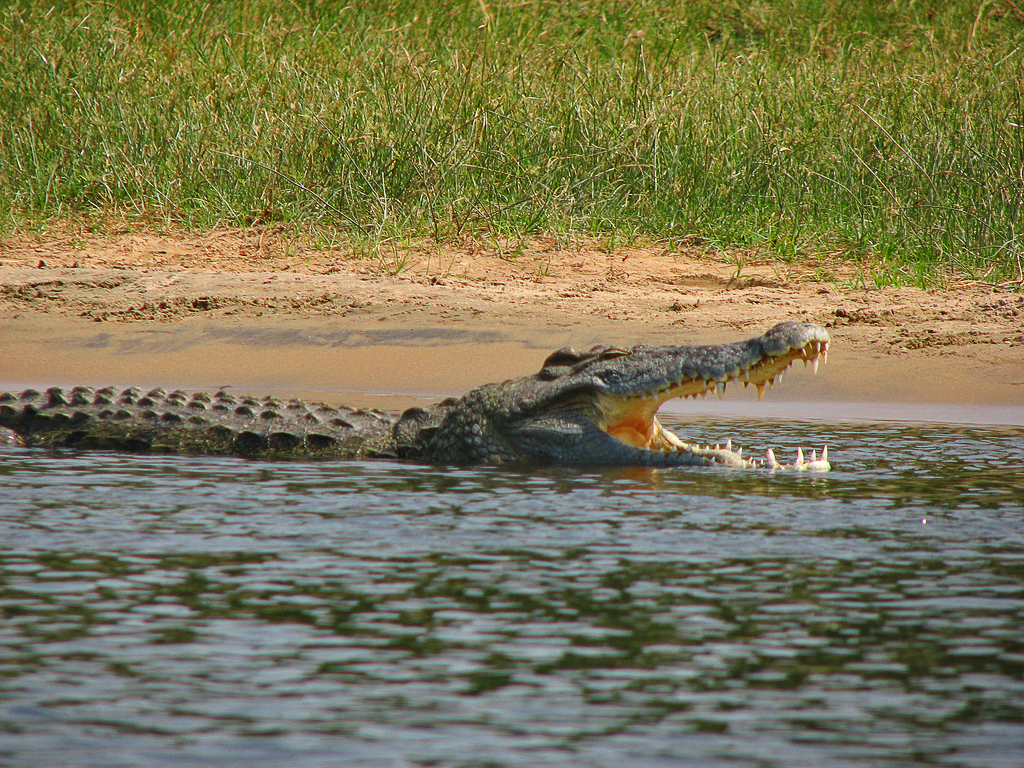Nile Crocodile (Crocodylus niloticus)
Description: An apex predator, the Nile crocodile is the second largest reptile in the world. On average the Nile crocodile is between 4.1 metres (13 ft) to 5 metres (16 ft), weighing around 410 kg (900 lb). However, specimens measuring 6.1 metres (20 ft) in length and weighing 907 kg (2,000 lb) have been recorded. They have thick scaly skin that is heavily armored.
Habitat: The Nile crocodile is quite widespread throughout Sub-Saharan Africa, occurring mostly in the central, eastern, and southern regions of the continent and lives in different types of aquatic environments such as lakes, rivers and marshlands.
Type of sexual reproduction: Nile crocodiles lay eggs to reproduce, which are guarded by the female. The hatchlings are also protected for a period of time, but hunt by themselves and are not fed by the parents.
Eating habits: Adults are apex predators and prey upon various birds, reptiles and mammals. This includes ostrich and pythons, antelopes, gazelles, waterbuck, bushbuck, impala, sitatunga, lechwe, eland, kudu, gemsbok, sable antelope and wildebeest zebras, warthogs and baboons. When crocodiles grow they prefer larger prey for energy efficiency. Therefore large adults rarely tackle small prey. Large adults sometimes take on larger prey such as giraffe, Cape buffalo, young hippos, and young elephants and even black rhinoceros and hippopotamus. Even other predators like hyenas, cheetah, African wild dogs, jackals, leopards, and lions have been killed by crocs.
Diseases and harm to humans: Given their preference for large mammals, it is not surprising that hundreds of people and large numbers of livestock are lost each year to attacks. They usually catch prey that comes to the water to drink, but can also hunt on land, lying in ambush near forest trails or roadsides, up to 50 m (170 feet) from the water's edge. The species is hunted and farmed for its skin used for leather.
Prevention: Awareness of surroundings and caution is the only real prevention.

